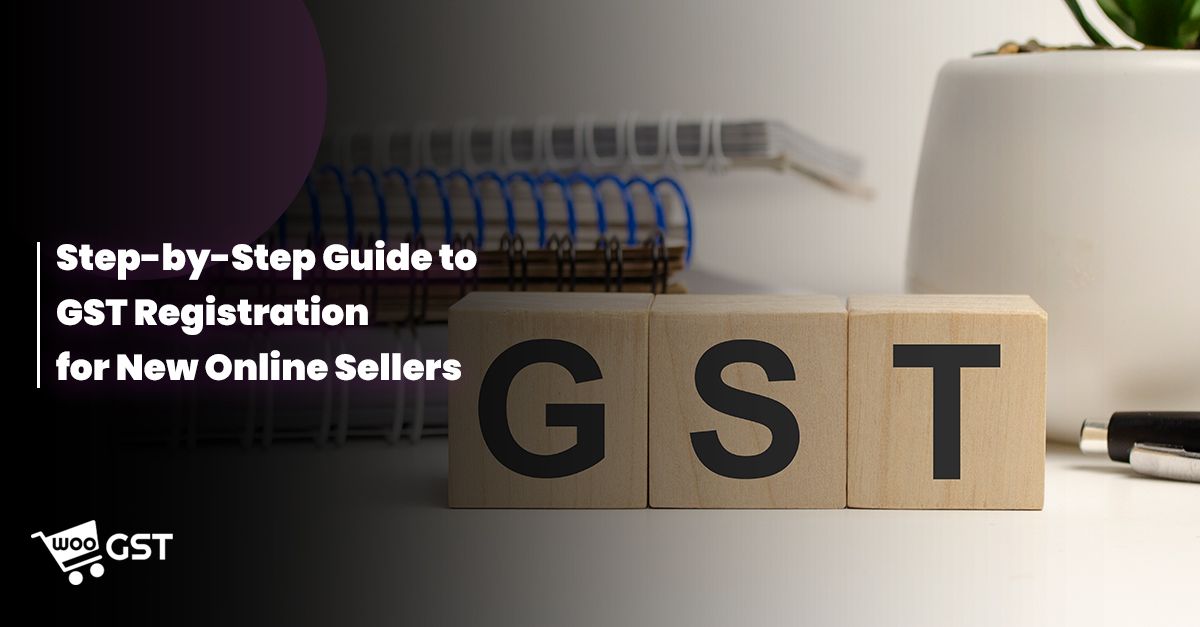
Are you launching an online store in India? Understanding GST registration is crucial for your e-commerce success. This comprehensive guide walks you through the entire GST registration process for new online sellers.
What is GST and Why Does Your Online Store Need It?
Goods and Services Tax (GST) is India’s comprehensive indirect tax structure that has replaced multiple taxes since July 2017. For online sellers, GST registration is not just a legal requirement—it’s your business identity in the tax ecosystem.
As an online seller, GST registration offers multiple benefits:
- Legal compliance with India’s tax regulations
- Ability to collect GST from customers
- Input Tax Credit (ITC) on your purchases
- Simplified tax filing through a unified system
- Enhanced credibility for your online business
When Should Online Sellers Register for GST?
If your online business meets any of these criteria, GST registration is mandatory:
- Annual turnover exceeds ₹40 lakhs (₹20 lakhs for special category states)
- Selling products across state borders (interstate supplies)
- Selling through e-commerce platforms like Amazon or Flipkart
- Planning to scale your business beyond local markets
Even if you’re below these thresholds, voluntary registration offers advantages for growing businesses, especially for claiming input tax credits.
Documents Required for GST Registration
Before starting the registration process, gather these essential documents:
- PAN Card of the business owner or entity
- Aadhaar Card for verification
- Business registration documents (Partnership deed, Certificate of Incorporation)
- Proof of business address (Rent agreement, Property tax receipt)
- Bank account details with canceled cheque
- Digital photograph of the proprietor/partners/directors
- Digital signature (for companies and LLPs)
Pro tip: Keep scanned copies of all documents ready in PDF format (under 100KB each) to streamline the application process.
Step-by-Step GST Registration Process for Online Sellers
Step 1: Visit the GST Portal
Navigate to www.gst.gov.in and click on “Services” followed by “Registration” to begin the process.
Step 2: Fill Form GST REG-01
- Select “New Registration” and provide your business details
- Enter your PAN, email, and mobile number
- Verify through the OTP sent to your registered email and phone
Step 3: Create Username and Complete the Application
After verification, create your username and password, then proceed to fill out all parts of Form GST REG-01:
- Business details and type (Proprietorship/Partnership/Company)
- Principal place of business
- Additional places of business (if any)
- Bank account details
- Details of proprietor/partners/directors
- Details of authorized signatories
- Business activity details including HSN codes for products
Step 4: Upload Required Documents
Upload all scanned documents as per requirements. For online sellers, additional documents may include:
- Marketplace agreements (if selling through platforms)
- Website screenshots or domain ownership proof (for your own online store)
Step 5: Submit Application and Track ARN
After submitting the form, you’ll receive an Application Reference Number (ARN). Use this to track your application status.
Step 6: Verification Process
The tax authorities may:
- Approve your application directly
- Request additional information/documents
- Schedule physical verification of your business premises
Step 7: Receive GSTIN and Certificate
Once approved, you’ll receive your 15-digit Goods and Services Tax Identification Number (GSTIN) and registration certificate through email.
Post-Registration Steps for Online Sellers
After receiving your GSTIN, take these essential steps:
- Display GSTIN on your website and all business communications
- Configure your WooCommerce store for GST collection using a plugin like WooGST
- Set up proper invoicing with GST details (CGST, SGST, IGST)
- Maintain accounting records of all transactions
- File regular GST returns as per the prescribed schedule
Simplify GST Compliance with WooCommerce GST Plugin
Managing GST for your online store can be complex, especially with varying tax rates and inter-state transactions. This is where the WooCommerce GST Plugin (WooGST) becomes invaluable for new online sellers.
WooGST automates GST calculations based on customer location, generates compliant invoices, and helps you stay updated with changing tax regulations. With features like HSN code management and simplified reporting, you can focus on growing your business while ensuring perfect tax compliance.
Conclusion
GST registration is a foundational step for your online selling journey in India. By following this step-by-step guide, you can navigate the registration process confidently and set up your WooCommerce store for GST compliance from day one.
Remember that GST compliance is an ongoing responsibility. Investing in proper tools like WooGST will save you time, reduce errors, and help your online business thrive in India’s digital marketplace.
Are you ready to make your WooCommerce store GST-compliant? Try WooGST today for hassle-free GST management with lifetime support and updates!
All Rights Reserved. © 2025